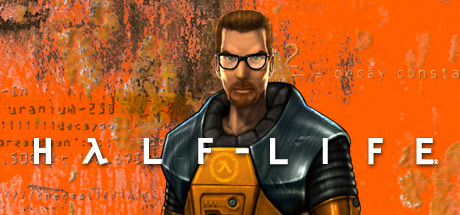In 1998, the gaming landscape was forever changed with the release of “Half-Life,” a title that would become a cornerstone of narrative-driven, immersive gaming. But the origins of this iconic game are as fascinating as the game itself, starting with its environment, grounded not in the common tropes of space or dystopian futures, but in the stark, high deserts of Eastern Washington.
Karen Laur, a key developer, gathered much of the game’s reference imagery from this region, driving for hours to capture the essence of the desert and its monumental cliffs. It was a meticulous process that set the tone for the game’s unique setting: Black Mesa Research Facility, an intricate part of the game’s opening sequence that welcomed players with the now-iconic announcement over the Black Mesa Transit System.
The early days of Valve, the game’s developer, saw co-founders Mike Harrington and Gabe Newell leave established careers at Microsoft to dive into the uncertain world of game development. With no clear plan, they acquired the Quake engine from id Software and assembled a diverse team, many of whom had no game development experience. This team would not only build “Half-Life” but also the very structure of Valve itself.
Valve’s approach to game design was revolutionary. They envisioned a game that would acknowledge the player’s actions, a stark contrast to the static worlds prevalent at the time. This philosophy permeated every aspect of development, from the AI’s ability to communicate its state through sound, to the environmental interactivity where even shooting a wall would leave a mark, reinforcing the player’s impact on the game world.
Half-Life’s character design was a collaborative effort between artists with different visions, ultimately merging to create the game’s memorable creatures like the headcrab and the iconic G-Man, whose eerie presence was voiced by Michael Shapiro, bringing an unforgettable character to life with what the team referred to as a “crazy lizard voice.”
Sound design played a crucial role in immersing players in Black Mesa’s world. The team, particularly Kelly Bailey, crafted an auditory experience that communicated the state of the AI, contributed to the game’s atmosphere, and even affected gameplay mechanics.
Level design in “Half-Life” was a monumental task, particularly the final alien world, Xen. It was a place that tested the limits of the game’s design tools and the team’s creativity, aiming to deliver a truly alien experience, even if it meant breaking away from the game’s established mechanics.
The narrative of “Half-Life,” penned by Marc Laidlaw, avoided explicit exposition, instead weaving the story into the game’s fabric, a technique that would become a hallmark of Valve’s storytelling. The voice acting, including performances from the versatile Harry S. Robins and the aforementioned Shapiro, provided a human touch to the sci-fi tale.
Post-release, the team reflected on the Herculean effort that brought “Half-Life” to fruition. For many, it was a period marked by long hours and personal sacrifice, underscored by the game’s success and its enduring legacy.
As “Half-Life” celebrates 25 years, its influence is evident in countless titles that followed. The game’s development, a story of innovation, collaboration, and sheer determination, remains a testament to the art of making games, a medium where, as “Half-Life” proved, anything is possible.

Gladstone is a tech virtuoso, boasting a dynamic 25-year journey through the digital landscape. A maestro of code, he has engineered cutting-edge software, orchestrated high-performing teams, and masterminded robust system architectures. His experience covers large-scale systems, as well as the intricacies of embedded systems and microcontrollers. A proud alumnus of a prestigious British institution, he wields a computer-science-related honours degree.
